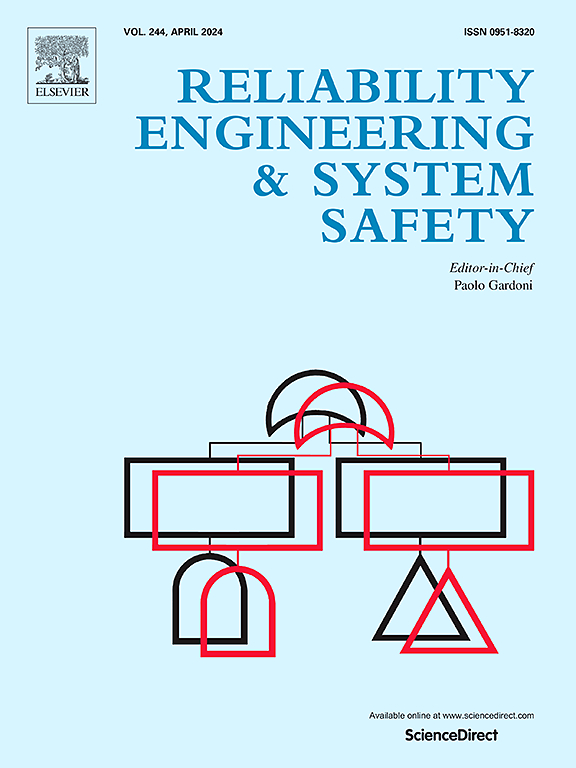Markov chain-based model for IoT-driven maintenance planning with human error and spare part considerations
IF 9.4
1区 工程技术
Q1 ENGINEERING, INDUSTRIAL
引用次数: 0
Abstract
This study introduces a Markov-based optimization framework for maintenance and spare parts inventory management, enhancing cost efficiency and operational reliability in cement production. By leveraging steady-state probabilities, the model integrates real-time equipment monitoring via the Industrial Internet of Things (IoT), reducing manual inspections and mitigating human errors. A comprehensive analysis demonstrates that level-2 preventive maintenance (PM) achieves the highest steady-state probability, effectively balancing cost minimization and system reliability over a 36-period planning horizon. Key optimization variables include the IoT adoption rate (γ = 0.72), human error probability (HEP) ( = 0.137), and total cost objective (= 3151,385 currency units). The model dynamically adjusts inventory replenishment policies to minimize stockouts and reliance on costly emergency orders. Results indicate that the proposed framework significantly improves maintenance scheduling, optimizes resource allocation, and reduces operational downtime. Furthermore, the study underscores the model's adaptability and its potential for integration with predictive analytics, paving the way for intelligent, data-driven maintenance strategies. These findings provide a strong foundation for advancing industrial maintenance optimization and operational efficiency.
考虑人为错误和备件因素的物联网驱动维修计划的马尔可夫链模型
本研究引入了一种基于马尔可夫的维护和备件库存管理优化框架,以提高水泥生产的成本效率和运行可靠性。通过利用稳态概率,该模型通过工业物联网(IoT)集成了实时设备监控,减少了人工检查并减轻了人为错误。综合分析表明,2级预防性维护(PM)实现了最高的稳态概率,在36个周期的规划范围内有效地平衡了成本最小化和系统可靠性。关键优化变量包括物联网采用率(γ = 0.72)、人为错误概率(HEP) (p[Total] = 0.137)和总成本目标(z[Total]= 3151,385货币单位)。该模型动态调整库存补充策略,以最大限度地减少缺货和对昂贵的紧急订单的依赖。结果表明,该框架显著改善了维护计划,优化了资源分配,减少了运行停机时间。此外,该研究强调了该模型的适应性及其与预测分析集成的潜力,为智能、数据驱动的维护策略铺平了道路。这些发现为推进工业维修优化和运行效率提供了坚实的基础。
本文章由计算机程序翻译,如有差异,请以英文原文为准。
求助全文
约1分钟内获得全文
求助全文
来源期刊

Reliability Engineering & System Safety
管理科学-工程:工业
CiteScore
15.20
自引率
39.50%
发文量
621
审稿时长
67 days
期刊介绍:
Elsevier publishes Reliability Engineering & System Safety in association with the European Safety and Reliability Association and the Safety Engineering and Risk Analysis Division. The international journal is devoted to developing and applying methods to enhance the safety and reliability of complex technological systems, like nuclear power plants, chemical plants, hazardous waste facilities, space systems, offshore and maritime systems, transportation systems, constructed infrastructure, and manufacturing plants. The journal normally publishes only articles that involve the analysis of substantive problems related to the reliability of complex systems or present techniques and/or theoretical results that have a discernable relationship to the solution of such problems. An important aim is to balance academic material and practical applications.
 求助内容:
求助内容: 应助结果提醒方式:
应助结果提醒方式:


